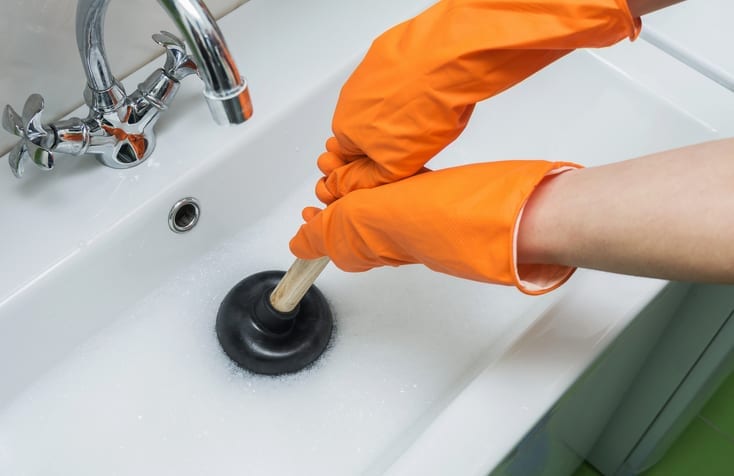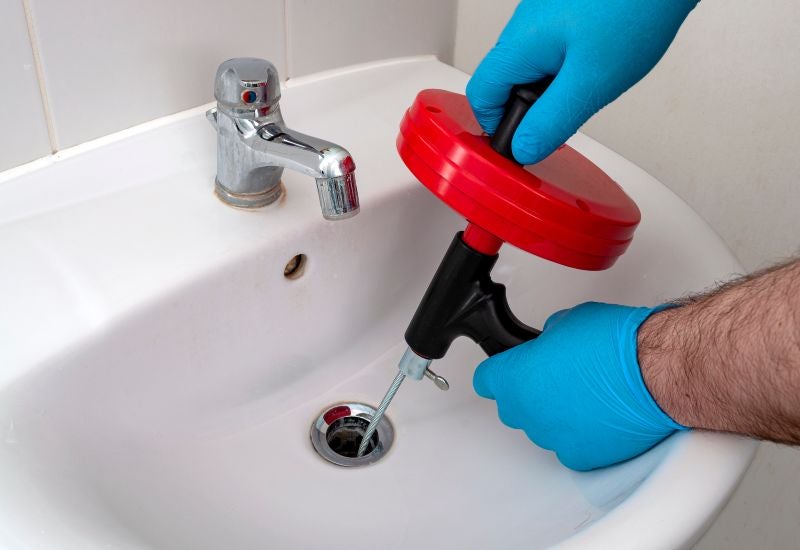Improving Plungers and Drain Cleaner: Professional Techniques
Improving Plungers and Drain Cleaner: Professional Techniques
Blog Article
Just about every person is bound to have their unique rationale in relation to How to Use a Plunger to Unclog a Toilet or Drain.

Intro
Appropriate maintenance of household drains pipes is crucial for stopping blockages and guaranteeing smooth water circulation. Among the secret devices in every home owner's toolkit is the plunger, alongside numerous drain cleaners made to tackle stubborn obstructions effectively. This article checks out just how to use bettors and drainpipe cleaners successfully to maintain your drains pipes moving freely.
Area 1: Comprehending Plungers
Types of Plungers
There are several types of bettors readily available, each designed for various kinds of drains and clogs. One of the most typical types consist of mug plungers, flange bettors, and accordion plungers.
How Plungers Job
Plungers work with the principle of developing stress and suction to dislodge blockages. When correctly used over a drain, they produce a vacuum that can pull out particles or break up obstructions.
Choosing the Right Plunger
Picking the right plunger relies on the type of drain and the nature of the obstruction. Cup bettors are excellent for sinks and bathtubs, while flange plungers are better suited for commodes because of their style.
Usual Blunders with Bettors
Preventing these mistakes guarantees efficient plunging: incorrect seal around the drainpipe, not enough pressure, and unclear bordering debris.
Area 2: Making Use Of Plungers Efficiently
Prep work
Prior to diving, ensure the bettor covers the drainpipe entirely and forms a tight seal. Clear any type of visible particles around the drainpipe opening.
Method
Beginning with mild diving activities to construct suction. Rise stress progressively, using a stable rhythm. Repeat as required until the drain clears.
Troubleshooting Tips
If diving does not function, try adjusting the seal, applying oil jelly for a far better seal, or utilizing a different type of bettor.
Section 3: Understanding Drainpipe Cleansers
Types of Drain Cleaners
Drain cleaners can be chemical or enzymatic. Chemical cleaners use solid chemicals to liquify obstructions, while chemical cleansers utilize natural enzymes to break down organic matter.
How Drainpipe Cleaning Company Job
Chemical cleaners react with obstructions to liquify them, while enzymatic cleaners break down natural products like hair and grease without damaging pipelines.
Safety and security Considerations
Constantly wear gloves and eye security when utilizing chemical drain cleansers. Guarantee ample ventilation and comply with producer instructions thoroughly.
Eco-Friendly Alternatives
Think about using vinegar and cooking soda or enzyme-based cleansers for green options that are safer for pipes and the environment.
Section 4: Using Drain Cleaners Effectively
Application Techniques
Put chemical cleansers straight into the drain opening. Permit them to benefit the suggested time before flushing with warm water. Enzymatic cleaners need to rest overnight.
Preventative measures
Stay clear of mixing various kinds of cleaners, as this can generate hazardous fumes. Never utilize chemical cleaners along with a plunger, as splashing can occur.
Dealing With Stubborn Clogs
For persistent clogs, consider making use of a pipes serpent or calling an expert plumbing technician to avoid damage to pipelines.
Verdict
To conclude, understanding just how to make use of plungers and drainpipe cleansers efficiently is important for keeping healthy plumbing systems. By picking the right devices and techniques, property owners can tackle minor blockages and stop significant plumbing issues down the line.
How To Properly Use A Plumbing Snake To Clear Drains
When any drain clogs in our home arise, we tend to gravitate toward the plunger and little else. In cases where the plunger and its vacuum-created pressure are not able to clear clogs, many immediately move to harmful chemicals or simply call their plumber to fix the issue.
we’re happy to help with all drain cleaning needs and concerns. This includes informing you on a few other home remedies you may have at your disposal for minor to moderate clogs, one of which is the use of a plumbing snake. Many people have never used one of these before – let’s go over the steps to take when your drain clogs and you have a plumbing snake available.
Attempt Plunger Use
The first step here, as we noted above, should indeed be to grab your plunger when you notice a drain clog and attempt to resolve it this way. If you’re unsure how to use a particular type of plunger, our plumbers can answer any questions you have. If this doesn’t do the trick, however, you move on to the snake.
Locate And Prepare Snake
A plumbing snake is a metal or plastic device that’s generally about a quarter of an inch thick. It’s design with significant extensions, meant to reach down into your clogged drain and push the clog out. Snakes also contain drain augers that will latch onto and push stubborn blockages.
If your plunger doesn’t clear a clog, locate your snake and bring it to the drain in question. We also recommend keeping a bucket nearby to collect the clog once you pull it out, plus we’d advise wearing goggles and possibly protective gloves.
Feed Snake
Once you’re ready to go, feed the snake slowly down the drain, using the crank device it comes with to keep it moving until it finds the clog. Once this happens, much of the clog will be latched onto the coil so you can pull it out, while the rest will simply break up and flow downward.
Detach Debris
Remove the snake slowly from the drain, and once you’ve done so, pick off any debris that’s stuck to the coil. This is another area where wearing gloves is a must.
Flush Drain
Finally, take a few minutes to ensure the snake has done its job correctly. If you’ve been using it on a toilet, flush the toilet a couple times and make sure everything flows well. If you’ve used it on a different drain, flush it with some room temperature water.
https://www.mybuddytheplumber.com/blog/how-to-properly-use-a-plumbing-snake-to-clear-drains/

Application Techniques
Put chemical cleansers straight into the drain opening. Permit them to benefit the suggested time before flushing with warm water. Enzymatic cleaners need to rest overnight.
Preventative measures
Stay clear of mixing various kinds of cleaners, as this can generate hazardous fumes. Never utilize chemical cleaners along with a plunger, as splashing can occur.
Dealing With Stubborn Clogs
For persistent clogs, consider making use of a pipes serpent or calling an expert plumbing technician to avoid damage to pipelines.
Verdict
To conclude, understanding just how to make use of plungers and drainpipe cleansers efficiently is important for keeping healthy plumbing systems. By picking the right devices and techniques, property owners can tackle minor blockages and stop significant plumbing issues down the line.
How To Properly Use A Plumbing Snake To Clear Drains
When any drain clogs in our home arise, we tend to gravitate toward the plunger and little else. In cases where the plunger and its vacuum-created pressure are not able to clear clogs, many immediately move to harmful chemicals or simply call their plumber to fix the issue.
we’re happy to help with all drain cleaning needs and concerns. This includes informing you on a few other home remedies you may have at your disposal for minor to moderate clogs, one of which is the use of a plumbing snake. Many people have never used one of these before – let’s go over the steps to take when your drain clogs and you have a plumbing snake available.
Attempt Plunger Use
The first step here, as we noted above, should indeed be to grab your plunger when you notice a drain clog and attempt to resolve it this way. If you’re unsure how to use a particular type of plunger, our plumbers can answer any questions you have. If this doesn’t do the trick, however, you move on to the snake.
Locate And Prepare Snake
A plumbing snake is a metal or plastic device that’s generally about a quarter of an inch thick. It’s design with significant extensions, meant to reach down into your clogged drain and push the clog out. Snakes also contain drain augers that will latch onto and push stubborn blockages.
If your plunger doesn’t clear a clog, locate your snake and bring it to the drain in question. We also recommend keeping a bucket nearby to collect the clog once you pull it out, plus we’d advise wearing goggles and possibly protective gloves.
Feed Snake
Once you’re ready to go, feed the snake slowly down the drain, using the crank device it comes with to keep it moving until it finds the clog. Once this happens, much of the clog will be latched onto the coil so you can pull it out, while the rest will simply break up and flow downward.
Detach Debris
Remove the snake slowly from the drain, and once you’ve done so, pick off any debris that’s stuck to the coil. This is another area where wearing gloves is a must.
Flush Drain
Finally, take a few minutes to ensure the snake has done its job correctly. If you’ve been using it on a toilet, flush the toilet a couple times and make sure everything flows well. If you’ve used it on a different drain, flush it with some room temperature water.
https://www.mybuddytheplumber.com/blog/how-to-properly-use-a-plumbing-snake-to-clear-drains/

I was introduced to that report on A Guide to Plungers (and How to Use Them) through a buddy on another site. Do you know about somebody who is involved in the topic? Be sure promote it. I praise you for being here. Kindly visit our site back soon.
Book Report this page